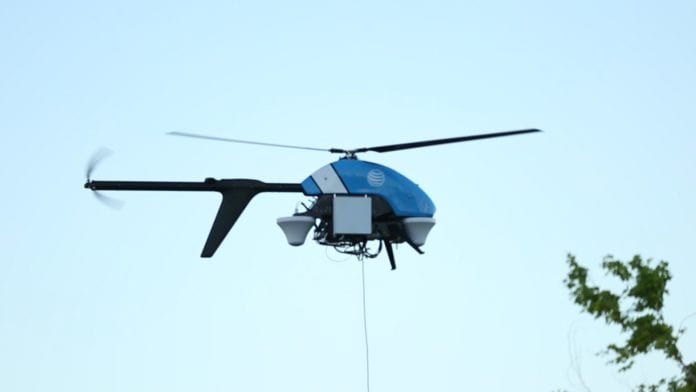AT&T is using a flying cell site to bring temporary connectivity to residents of Puerto Rico, where many towers and rooftop sites remain incapacitated due to Hurricane Maria. The carriers says this is the first time an LTE cell site on a drone has been successfully deployed to connect residents after a disaster.
A tether connects the drone to the ground and provides both power and data transmission. The drone can stay airborne for several hours, and can hover 200 feet above the ground. In tests, AT&T’s tethered drones have hovered as high as 400 feet, the highest altitude allowed for drones by the Federal Aviation Administration.
“The higher you go, with the antennas on the drone, the wider the coverage area that we can support,” said Art Pregler, director of national mobility systems at AT&T. He said the larger drones can support up to 8,000 users.
In Puerto Rico, AT&T also continues to use portable satellite units at the base of clusters of cell towers to provide connectivity. The carrier says it is now connecting Rincon Pueblo, Utuado, Barceloneta, Barranquitas, Bayaney-Lares, Cabo Rojo and Ciales with portable units that use satellite connectivity to support calls, texts and data.
Recently, AT&T unveiled its own unmanned aerial vehicle, which it calls Otto. Pregler said the carrier wanted a custom drone because none of the available models fit all its requirements. AT&T wanted a drone that could operate safely during all kinds of weather conditions.
Follow me on Twitter.

